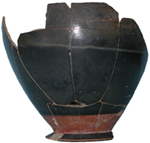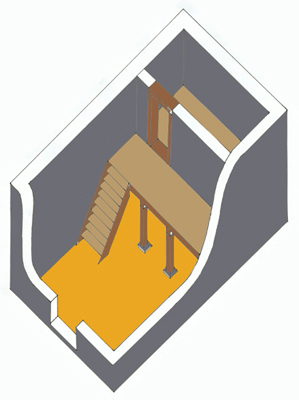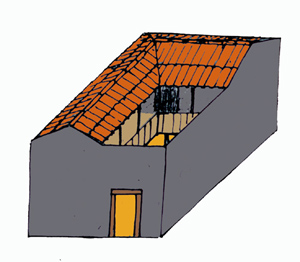The city of Argilos enjoyed great prosperity until the foundation of Amphipolis in 437 B.C., but saw a net decline in the city’s architecture and various economical activities thereafter. The city suffered a second destruction towards the last quarter of the 5th century B.C. This destruction may have to do with the Peloponnesian war, during which Argilos sided with Sparta against Athens and participated to the attack on Amphipolis. Once Amphipolis regained its independance at end of the war, it may have decided to take revenge by attacking Argilos and destroying many of its buildings. Most were rebuilt, but the ashlar masonry and the quality of the walls are often much inferior to those used before and only part of the previous buildings were reoccupied. One can also sense a decline in the pottery imports, Athens remaining the only southern city represented. It is possible that many inhabitants decided to move to Amphipolis, which had already become one of the biggest greek colonies in the region. Anyway, it is clear that Amphipolis had the upper hand in the regional economy, forcing Argilos to turn to more traditional ways to support their economy, mainly farming and fishing activities.

Attic black glazed skyphos
The city’s life came to an end under the rule of the Macedonian King Philip II. In 357 B.C. he conquered the whole region, destroying for a last time the buildings of Argilos and forcing those who had stayed to move to Amphipolis, which became the macedonian empire’s main city in the region.

Plan of House “A”, second phase, 5th century B.C.

Maison A, phase 2, Vème siècle av. J.-C.

Drawinf of House “A”, second phase, 5th century B.C.


